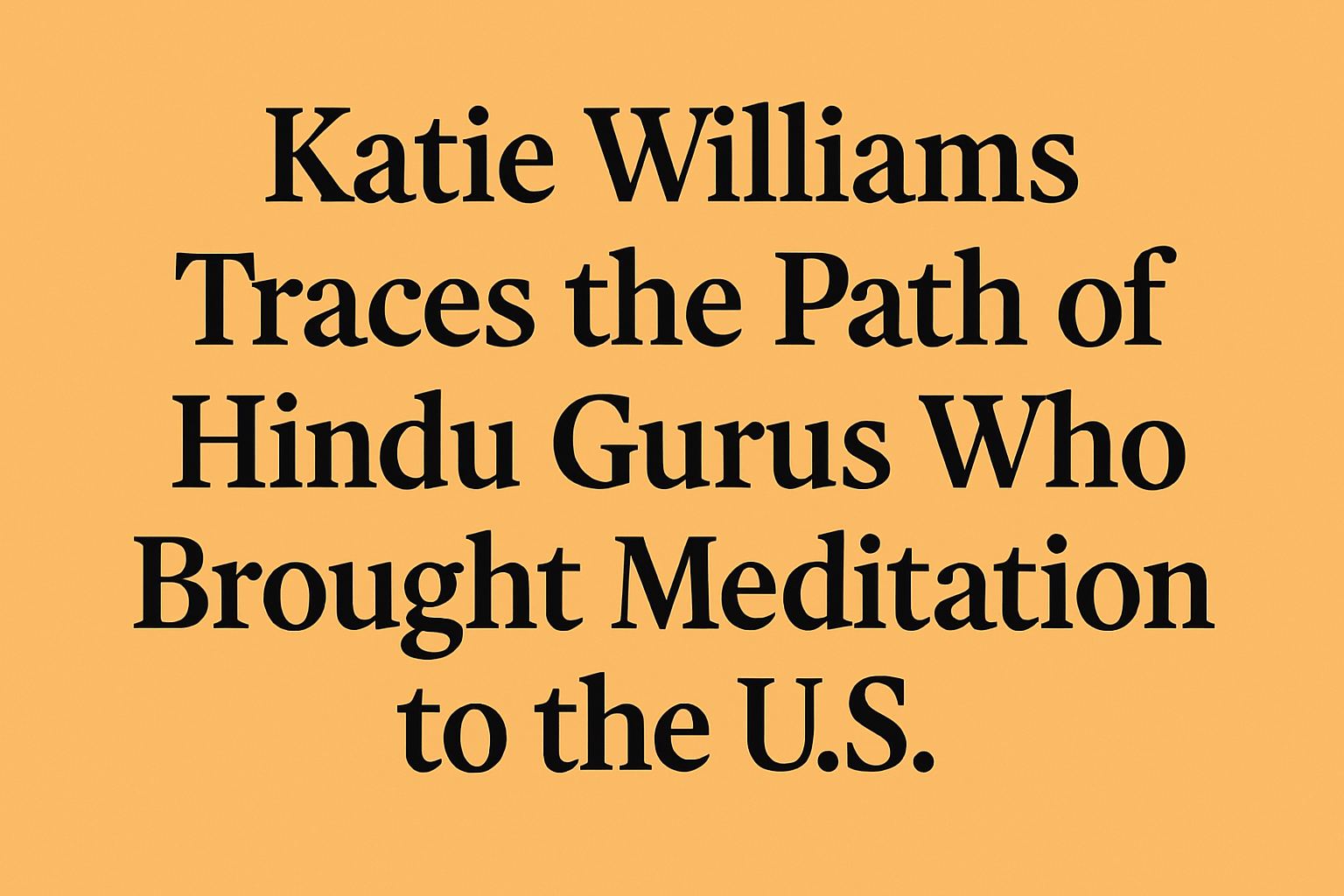When people think of meditation in the United States today, images of yoga studios, mindfulness apps, and wellness retreats often come to mind. But behind this modern movement lies a powerful history shaped by Hindu Gurus who carried ancient wisdom from India to the West.
Katie Williams, a travel enthusiast who gathers insights from books, videos, and online research, often writes about culture and spirituality from a global perspective. In this blog, she explores how Hindu Gurus brought meditation from India to America and shaped today’s wellness culture.
The Beginning: Swami Vivekananda‘s Bold Step
The story begins in 1893, when Swami Vivekananda addressed the Parliament of the World’s Religions in Chicago. His words introduced Hindu philosophy and meditation to an American audience that had never encountered these ideas before. Katie Williams notes that Vivekananda wasn’t just presenting spirituality; he was offering a new way of thinking that emphasized self-realization, inner strength, and universal brotherhood. His impact sparked the curiosity that would later blossom into a national fascination with meditation.
Paramahansa Yogananda and the Spread of Kriya Yoga
Another key figure in the journey was Paramahansa Yogananda, who arrived in the U.S. in the 1920s. Through his book Autobiography of a Yogi, he introduced millions of Americans to the practice of meditation and the philosophy of Kriya Yoga. Katie Williams highlights that Yogananda was among the first Hindu Gurus to truly embed himself in American culture. He established the Self-Realization Fellowship organization and taught that meditation could help people of any religion find peace and purpose.
The 1960s and 70s: A Cultural Shift
By the 1960s, America was in the midst of social change, and meditation gained momentum as people sought alternatives to traditional lifestyles. Hindu Gurus played a central role in this cultural shift. Maharishi Mahesh Yogi, known for popularizing Transcendental Meditation (TM), drew the attention of celebrities, including The Beatles, which brought meditation into mainstream consciousness. Katie Williams observes that this era was pivotal; meditation was no longer seen as foreign or esoteric, and it became a practical tool for stress relief, creativity, and inner growth.
Modern Voices, Timeless Wisdom
In recent decades, Hindu Gurus such as Sathya Sai Baba, Amma (Mata Amritanandamayi), and Sadhguru Jaggi Vasudev have continued the tradition, connecting ancient teachings with modern lifestyles. Their messages resonate with Americans searching for balance in an age of constant digital distraction. Katie Williams notes that meditation, once limited to monasteries and ashrams, is now recommended by doctors, studied by neuroscientists, and practiced daily by millions of Americans.
Why Hindu Gurus Matter Today
Katie Williams believes that the influence of Hindu Gurus on American wellness goes beyond just meditation techniques. They introduced values of compassion, self-discipline, and universal consciousness that continue to inspire. In workplaces, schools, and healthcare systems, meditation is now embraced not just as a spiritual exercise but as a tool for mental clarity, emotional health, and resilience.
A Lasting Legacy
The journey of Hindu Gurus to the U.S. reflects more than cultural exchange; it represents a shift in how Americans approach health, spirituality, and self-awareness. Katie Williams sees this legacy as proof that wisdom has no borders. Meditation, once an ancient Indian practice, has become a universal language of inner peace and healing.
Conclusion
The rise of meditation in America owes much to the courage and vision of Hindu Gurus who believed their teachings could benefit all of humanity. By tracing their path, Katie Williams reminds us that wellness is not just about managing stress or finding calm, it’s about reconnecting with the deeper self. And that is a message as relevant in America today as it was when Swami Vivekananda first stood in Chicago over a century ago.
